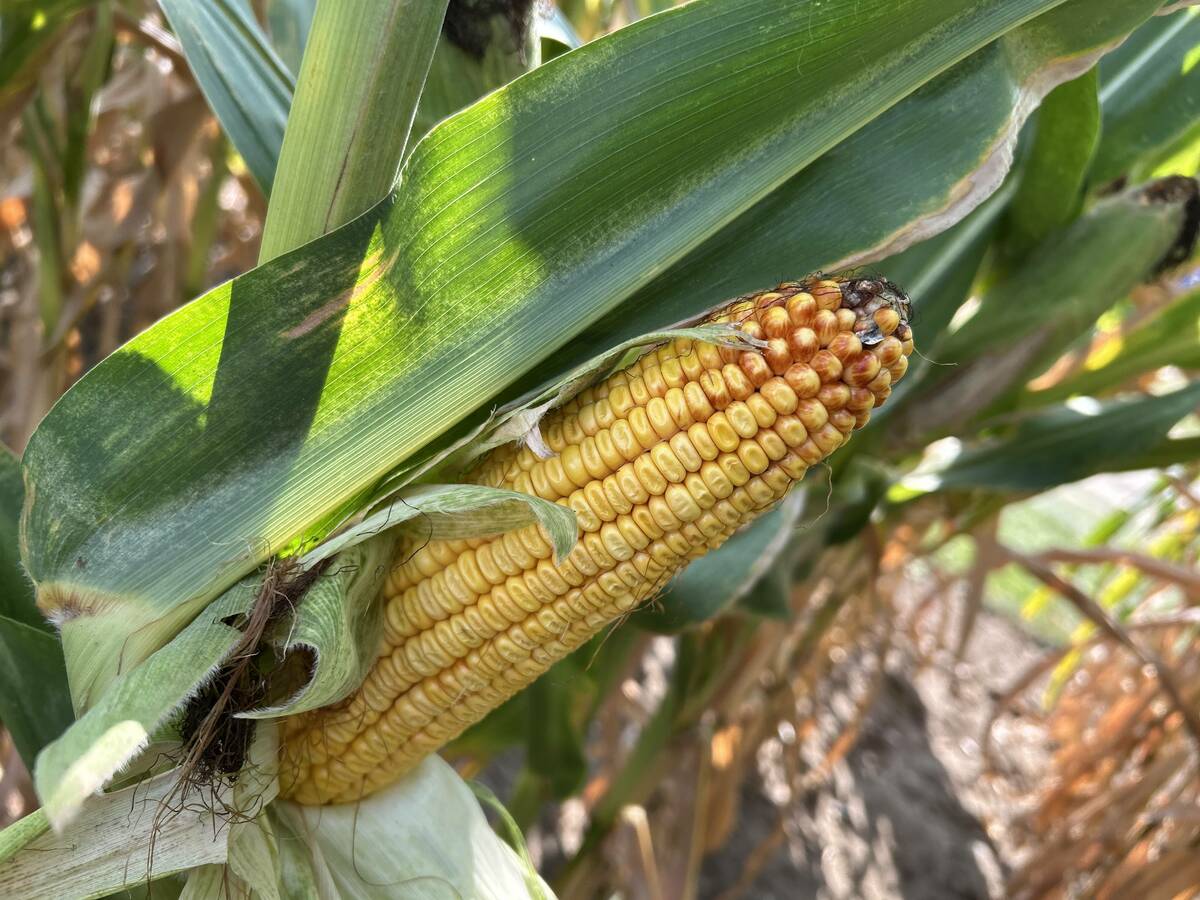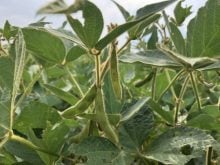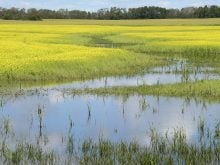Instead of dumping hoppers full of oats into a waiting grain truck, the Plett family spent a rare dry harvest afternoon trying to extricate a combine from slimy muck.
With Milton on the combine and a handful of children looking on, they hooked up a chain. With a plume of black diesel smoke, Joas on the four-wheel drive tractor gave the sunken machine a mighty heave.
The chain, a loan from neighbour Jim Rydz, snapped.
So they hooked up the chain for a second attempt, and with the engines in both machines revving hard, the combine slowly spun its way onto dry ground.
Read Also

Crop estimates show mixed results
Model-based estimates used by Statistics Canada showed the 2025/26 crop year has seen increases in canola, corn for grain, oats and lentils production while seeing dips in spring wheat, durum wheat, soybeans and barley in comparison to 2024/25.
Such scenes have been common in Manitoba’s Interlake this year, as farmers there slog through the wettest summer on record since 1951. Some weather stations in the area reported 31 rainy days in the two months between June 5 and Aug. 5.
The Pletts’ 100 acre oat field near Morweena, northwest of Arborg, is in one of the hardest-hit areas, and was drenched with 100 millimetres of rain two weeks ago. The grain was nicely ripened on the day Milton tried to get on the field to thresh it, and the ground was deceptively firm.
However, waiting underneath the surface was sticky yellow clay the consistency of bearing grease.
“(The field) has been in grass for a few years, and I thought it would have a firmer base,” said Milton.
The 2008 growing season has been a litany of horrors, said Rydz, who showed pictures of the pea-sized hail that flattened his garden a few weeks ago, as well as a few frames of a track-equipped combine that got stuck in a nearby field.
If the weather dries up, grain farmers might get their crops in the bin. But cattle producers will still be in rough shape, he said.
“Everybody is short of hay,” he said.
Near Poplarfield, Ralph Kehler was busy baling windrows of slough hay. Dual wheels on his baler tractor were keeping him above ground.
The hay that had been lying in swaths for a week and a half was just barely dry enough to roll up, even though the ground was still moist.
“For a long time we figured we’d be able to get it baled, then it would rain again,” said Kehler. “I just want to know what the cows are going to say this winter.”
Whether he’s short of hay for his 200 cows will depend on how harsh the winter is and how long it lasts, he added.
“If it’s a cold winter, the cattle will want to eat.”
Weather in the Interlake is prone to wild swings from dry to wet, he said, noting that 2003 was a drought year. For this reason, Kehler has never been in the habit of selling forage.
Even with hay rumoured to be worth as much as $60 a bale, he plans to stockpile leftover bales as a hedge against future shortages.
Nathan Plett, busy getting his haybine set up on a small field west of Arborg for a belated second cut of alfalfa, said that the lower, flatter parts of the Interlake have suffered the most over the summer.
“You’ll see a lot of water if you go to the right places,” he said, adding that he recently pulled a mired combine out with his high-hoe excavator.
“It was a tough pull. The field was water from one end to the next.”
Some parts along Highway 68, which stretches from Eriksdale to Arborg, have fared better than others. In some places, the hayfields are littered with large round bales, while in other areas they are few and far between.
Plett’s field was dry enough in most spots to support machinery, so he was planning to make wrapped alfalfa baleage for his 120 cows, even as it clouded up in the afternoon, threatening rain for the umpteenth time that summer.
“It’s late for a second cut,” he said, adding that in a normal year he’d have finished it before the end of August.
“I might have a bit for sale, but it depends on whether I can graze my corn. It germinated poorly because of the rain.”














